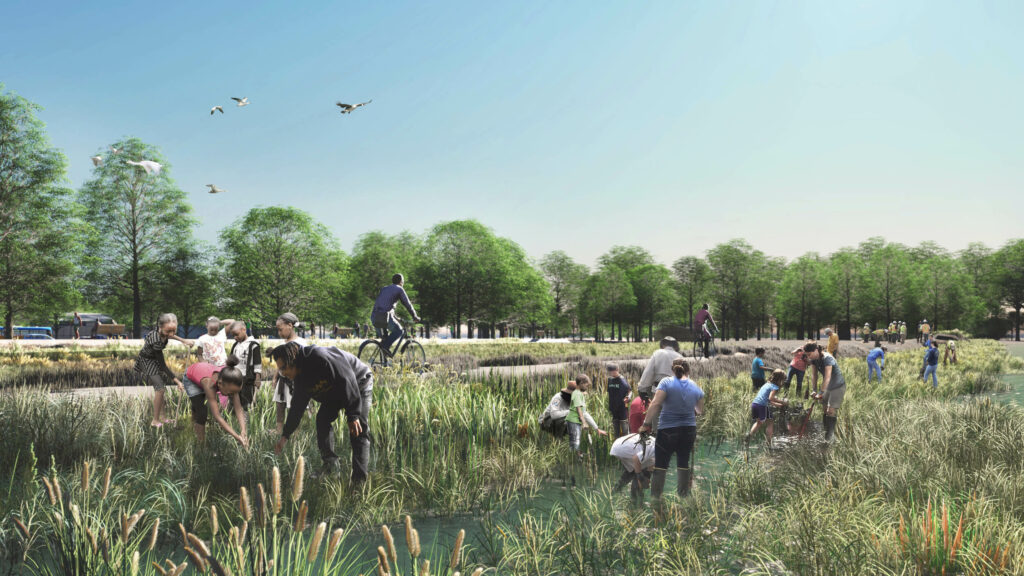The ouR-HOME sea level rise response projects are linked to the health and financial well-being of residents that have been traditionally shut out of opportunities to improve health and family wealth. Small lot housing, a community land trust, social impact bonds and community infrastructure combine to lower the cost of entry to home ownership. Green infrastructure proposals to bring the ‘marsh to Main Street’ with a horizontal levee, and plant 20,000 trees to filter air and water, are strategies that can be implemented through existing local job and career programs – benefiting the people in North Richmond.
Building on a vibrant local history, neighborhood stabilization and strategies for home ownership underlie the vision for a resilient North Richmond. A community land trust and small lot splits use vacant lots as a catalyst to lower the cost of entry for ownership, key for residents to have agency to collectively and individually respond to climate change. Community driven, pre-development collaboration is key to achieving multiple benefits. Infrastructure investment is one of the largest expenditures in the Bay Area. When historically disinvested communities participate in the decision-making process to direct that spending, residents can simultaneously build health and wealth, supporting self-determination and paths to housing ownership.



